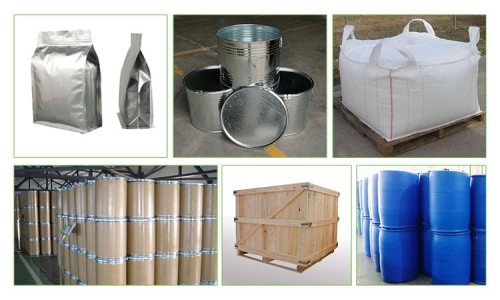Hafnium boride is a gray crystal with a metallic luster. It has high electrical conductivity and stable chemical properties. It hardly reacts with all chemical reagents (except hydrofluoric acid) at room temperature. It is produced by mixing and heating hafnium dioxide, boron oxide or boron carbide with carbon powder, or by hydrogen reduction of hafnium tetrachloride and boron trichloride at 2000°C or direct reaction between hafnium and boron. It is used as a high temperature lloy.
HB2 powder has a high melting point, hardness, electrical and thermal conductivity, and neutron absorption performance. It has important applications in ultra-high tmperature, superhard, electrode, and neutron absorption materials.
With the development of material technology, the application fields of hafnium diboride ceramics and composite materials are becoming more and more extensive. Obtaining low-cost, high-quality hafnium diboride powder is currently an important research and development direction at home and abroad. Hafnium diboride is difficult to sinter. Obtaining an ultrafine powder is necessary to improve the sintering performance. Although nano-powder has superior performance, its cost is high, and it is difficult to disperse during raw material processing, and the process is more difficult. Therefore, more and more attention has been paid to developing sub-micron hafnium diboride powder.
Hafnium diboride belongs to the Ultra-high-temperature ceramics class, a ceramic type composed of hafnium and boron. It has a melting temperature of about 3250 °C. It is an unusual ceramic, having relatively high thermal and electrical conductivities, properties it shares with isostructural titanium diboride and zirconium diboride. It is a grey, metallic-looking material. Hafnium diboride has a hexagonal crystal structure, a molar mass of 200.11 grams per mole, and a ~10.5 g/cm³ density.
Hafnium diboride is often combined with carbon, boron, silicon, silicon carbide, and nickel to improve the consolidation of the hafnium diboride powder (sintering). It is commonly formed into a solid by hot pressing, where the powders are pressed together using heat and pressure. Feel free to inquire about the latest price if you would like to buy Hafnium Diboride HfB2 Powder in bulk.
Specifications of Hafnium Boride
Hafnium diboride powder MF: HfB2
Hafnium diboride powder CAS: 12007-23-7
Hafnium diboride powder EINECS: 234-500-7
Hafnium diboride powder Density: 10.5 g/cm3
Hafnium diboride powder Melting point: ~3250 °C
Hafnium diboride powder MOQ: 1kg
Hafnium diboride powder Particle size: nano, micro and as customers' request
Hafnium diboride powder Package: Aluminum bag, vacuum packing, 1kg/bag, or as requested.
Features of Hafnium Boride
Hafnium diboride is an ultrahigh-temperature ceramic composed of hafnium and boron. It has a melting temperature of about 3250 degrees Celsius. It is an unusual ceramic, having relatively high thermal and electrical conductivities, properties it shares with isostructural titanium diboride and zirconium diboride. It is a grey, metallic-looking material. Hafnium diboride has a hexagonal crystal structure, a molar mass of 200.11 grams per mole, and a density of 10.5 grams per cubic centimeter.
How is Hafnium Boride Produced?
The combustion synthesis method of high-purity hafnium diboride powder is realized according to the following steps:
1. Mix the basic raw materials and diluents. The basic raw materials include hafnium dioxide, boric anhydride and magnesium powder. The percentages by weight are hafnium dioxide: 30% to 60%, boric anhydride: 10% to 40%, magnesium powder:15%~50%, the weight of the added diluent hafnium diboride is 0~3 times the basic raw material;
2. Drying and mixing;
3. Load the uniformly mixed raw material powder into a graphite boat and put it into a closed pressure vessel. The closed pressure vessel is cooled by circulating water, and the reaction is maintained under a protective atmosphere with a pressure of 0-5Mpa or under vacuum conditions. The raw materials are self-propagating combustion and transformed into products;
4. Take out the product after cooling. The product is a mixture of hafnium diboride and magnesium oxide. The magnesium oxide is removed by acid washing, and then the hafnium diboride is washed with water, filtered and dried to obtain hafnium diboride powder.
Hafnium diboride is used in wear-resistant coatings. Due to its excellent refractoriness, it has also been looked at for use in ultra-high-temperature composites in conjunction with silicon carbide (SiC). The addition of silicon carbide improves its oxidation resistance.
The oxidation resistance of hafnium diboride is dependent on the temperature and pressure. A protective oxide scale of hafnia forms at a temperature of 1500 °C and 1 atm of pressure. When temperatures rise above 1600 °C and pressures drop below 1 atm, the oxidation resistance of HfB2 is dramatically reduced. Under these conditions, the boiling temperature of B2O3 (one of the oxidation products of HfB2) and the protective oxide layer are exceeded.
Due to its strength and thermal properties, the material can be used in hypervelocity reentry vehicles such as ICBM heat shields or aerodynamic leading edges. Unlike polymer and composite materials, HfB2 can be formed into aerodynamic shapes that will not ablate during reentry.
Hafnium diboride is also investigated as a new material for nuclear reactor control rods.
Hafnium diboride is also being investigated as a microchip diffusion barrier. If synthesized correctly, the barrier can be less than 7 nm thick.

Tongrun Nano Technology Co. Ltd. (TRUNNANO) is a trusted global chemical material supplier & manufacturer with over 12 years of experience in providing super high-quality chemicals and nanomaterials, including boride powder, nitride powder, graphite powder, sulfide powder, 3D printing powder, etc.
The company has professional technical and quality supervision departments, a well-equipped laboratory with advanced testing equipment, and an after-sales customer service center.
If you are looking for high-quality Hafnium Boride, please feel free to contact us or click on the needed products to send an inquiry.
Storage Condition of Hafnium Boride
The damp reunion will affect HfB2 powder dispersion performance and using effects. Therefore, hafnium diboride HfB2 powder should be sealed in vacuum packing and stored in a cool and dry room; the hafnium diboride HfB2 powder can not be exposed to air. In addition, the HfB2 powder should be avoided under stress.

Packing&Shipment of Hafnium Boride
We have many kinds of packing, depending on the hafnium diboride HfB2 powder quantity.
Hafnium diboride HfB2 powder packing: vacuum packing, 100g, 500g or 1kg/bag, 25kg/barrel, or as requested.
Hafnium diboride HfB2 powder shipping: Could it be shipped out by sea, by air, or by express as soon as possible once the payment receipt is received?

L/C, T/T, Western Union, Paypal, Credit Card etc.

Q1
What is hafnium diboride?
Hafnium diboride (HfB2) is a grey-black crystal with a metallic lustre. Its crystal structure belongs to the hexagonal crystal system. Hafnium diboride (HfB2) is an excellent high-temperature ceramic material with a high melting point (3380°C).
Q2
What are the characteristics of hafnium diboride?
Hafnium diboride (HfB2) has a high melting point, high thermal conductivity, oxidation resistance and other high-temperature comprehensive performance of new ceramic materials, mainly used in ultra-high-temperature ceramics, high-speed aircraft nose cones and aviation, aerospace and other fields.
Q3
Is hafnium diboride stable?
Hafnium diboride does not decompose when used and stored by its specifications. At room temperature, it does not react with concentrated sulfuric acid, potassium sulfate, and phosphoric acid, but it reacts with concentrated hydrochloric acid and concentrated nitric acid.
Q4
What are the main uses of hafnium diboride?
Hafnium diboride is mainly used in high-temperature ceramics, high-speed aircraft nose cones, aviation, aerospace, and other fields. A high-temperature ceramics is a very promising candidate material, often used in high-temperature oxidative environments in ablation-resistant materials, at the same time, it has a high hardness, high modulus, high thermal conductivity and high electrical conductivity characteristics.
Q1
Is hafnium diboride harmful?
It can cause skin irritation and severe eye irritation. It can also cause respiratory irritation. So you need to wear protective gloves/protective clothing/eye protection/protective mask when using it. And avoid breathing dust/fume/gas/mist/vapour spray. Use only outdoors or in a well-ventilated area. Wash thoroughly after use.
Hafnium Diboride Properties | |
| Other Names | hafnium boride, HfB2 powder |
| CAS No. | 12007-23-7 |
| Compound Formula | HfB2 |
| Molecular Weight | 200.112 |
| Appearance | Black Powder |
| Melting Point | 3250 °C |
| Boiling Point | N/A |
| Density | 10.5 g/cm3 |
| Solubility in H2O | N/A |
| Exact Mass | 201.965161 |
Hafnium Diboride Health & Safety Information | |
| Signal Word | N/A |
| Hazard Statements | N/A |
| Hazard Codes | N/A |
| Risk Codes | N/A |
| Safety Statements | N/A |
| Transport Information | N/A |




